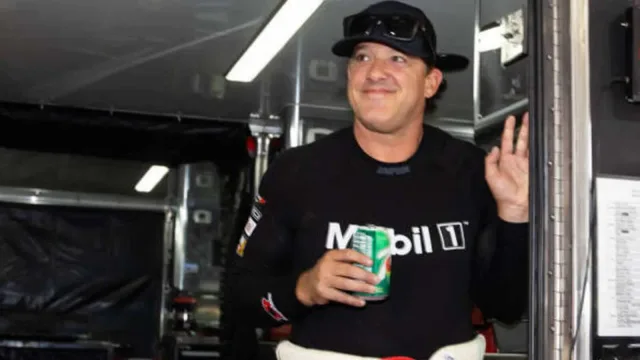Tony Stewart‘s decision to step away from full-time NASCAR Cup Series racing after 2016 was shaped not by slipping results but by his convictions on the future of the sport. Stewart, a three-time champion with a legendary record, has offered clear explanations as to his NASCAR retirement reasons, emphasizing changing values within the series as a deciding factor.
Philosophical Changes Lead to Stewart’s Exit
By the close of 2016, Stewart had not only amassed 49 Cup wins and three championships, but he also faced growing dissatisfaction with the evolving nature of the NASCAR Cup Series. Whereas earlier eras rewarded pure driving skill, Stewart saw a growing emphasis on aerodynamics and engineering over a driver‘s raw talent. This shift—from the driver to the technology—contributed heavily to his decision. At a 2017 Stewart Haas Racing press conference announcing Aric Almirola as the team‘s new driver, Stewart made an off-the-cuff yet telling declaration.
“If I come back, it won’t be in a Cup car,”
Stewart said with a grin, prompting gasps from the media (via Autoweek) —Tony Stewart, Three-Time NASCAR Cup Champion
The introduction of the Generation Six NASCAR Car of Tomorrow further cemented Stewart’s beliefs. This design, intended to bring parity, drastically limited creative adjustments and reduced the influence a driver could exert on race outcomes. While the car brought enhanced safety, its strict design left little room for drivers like Stewart to demonstrate unique talent.

Eyes on Other Racing Opportunities, Not a Nostalgic Comeback
Though Stewart’s love for racing persisted, he made it clear his interests were shifting towards formats prioritizing drivers over machines. Instead of longing for a return in a Cup car, Stewart considered opportunities in the Xfinity Series, especially on road courses he hadn’t raced, or a potential run in the Truck Series at Eldora.
“Everyone has talked about me running a Truck at Eldora. And you know, there are some road course races. I loved road course racing during my time as a Cup driver, so there are some road courses that Xfinity races on that I’ve never been to and I would like to try. I’ve explored doing that somewhere down the road,”
Stewart added (via Autoweek) —Tony Stewart, Three-Time NASCAR Cup Champion
Rather than chasing a sentimental “final race,” Stewart preferred the idea of competing where his instincts and car control could shine, such as at the innovative Charlotte Roval. For the NASCAR Hall of Famer, the allure was in tracks and events that let driver skill—not simply horsepower or engineering—make the difference.
The announcement of Stewart’s last full-time season came in 2015, after a tumultuous period personally and professionally. Despite qualifying for the 2016 Playoffs with a win at Sonoma, Stewart did not advance beyond the Round of 16 and had already started looking toward off-track roles and new racing ventures by then.
A Passion Redirected: Dirt Tracks and Driver-Centric Racing
Even as Stewart closed the NASCAR Cup Series chapter, he was far from finished with racing. In 2017, he set out to complete roughly 100 sprint car races in his signature No. 14 dirt car alongside Donny Schatz. Stewart found renewed enthusiasm at local dirt tracks, which he often favored over the big-budget, technology-driven contests of Cup Series Sundays.
In a candid conversation with Autoweek later that year, Stewart shared another clear rationale for his withdrawal:
“I wanted to race cars where I felt like I could make a difference. Road courses make you feel like you matter as a driver. I didn’t always feel that way on ovals last year because of the aerodynamics.”
—Tony Stewart, Three-Time NASCAR Cup Champion
He viewed NASCAR’s evolution—marked by downforce, aerodynamics, and focus on engineering—as diminishing the influence of natural talent and intuition. For Stewart, the heart of racing lay in places where quick thinking, adaptability, and risk mattered more than technical sophistication. Formats like dirt tracks and technical road courses reignited his love for racing, offering him the chance to be the decisive factor behind the wheel.
The Enduring Impact of Stewart’s Exit
While Stewart Haas Racing, under Tony Stewart’s influence, continued to thrive—capped by Kevin Harvick’s 2014 championship—Stewart’s personal journey underscores a broader debate within NASCAR about the balance between technology and talent. Stewart chose to focus on races, venues, and series that offer genuine opportunities to showcase driver abilities and passion. His retirement marked the end of an era but also spotlighted concerns that still echo among drivers and fans about the evolving nature of the sport.
The motivations behind Stewart’s retirement continue to shape conversations around NASCAR’s rules, car design, and what truly makes a driver great. As he remains active in racing and mentoring at Stewart Haas Racing, his legacy presses NASCAR and its future competitors to remember the value of driver-first competition.
